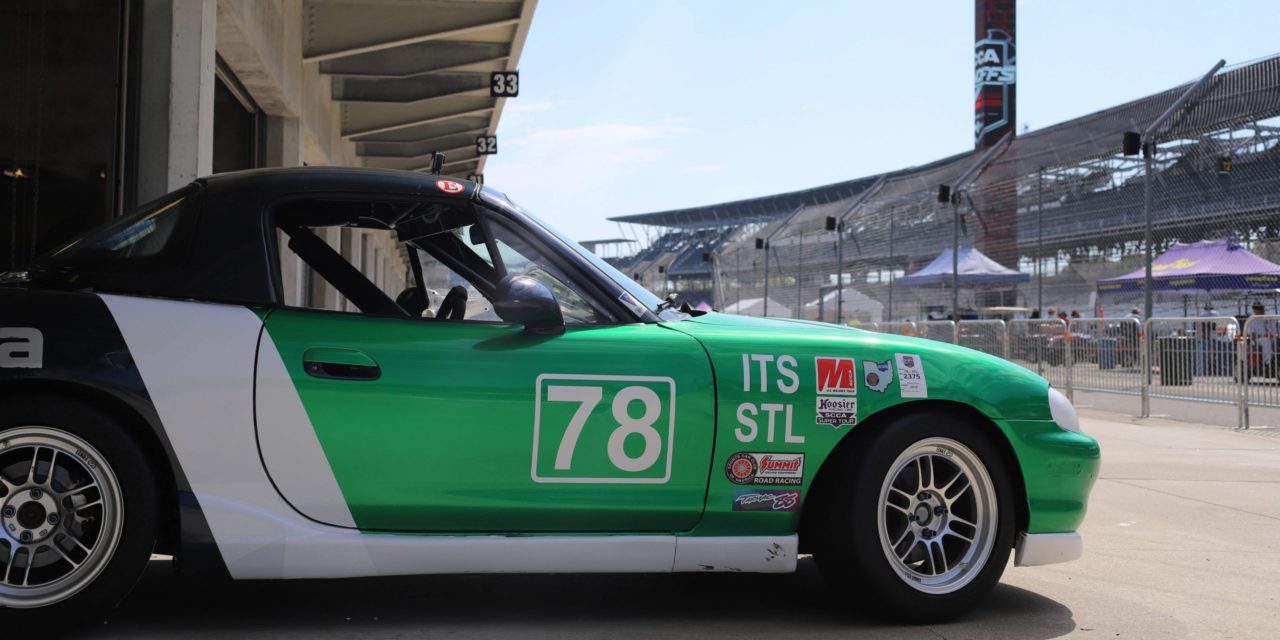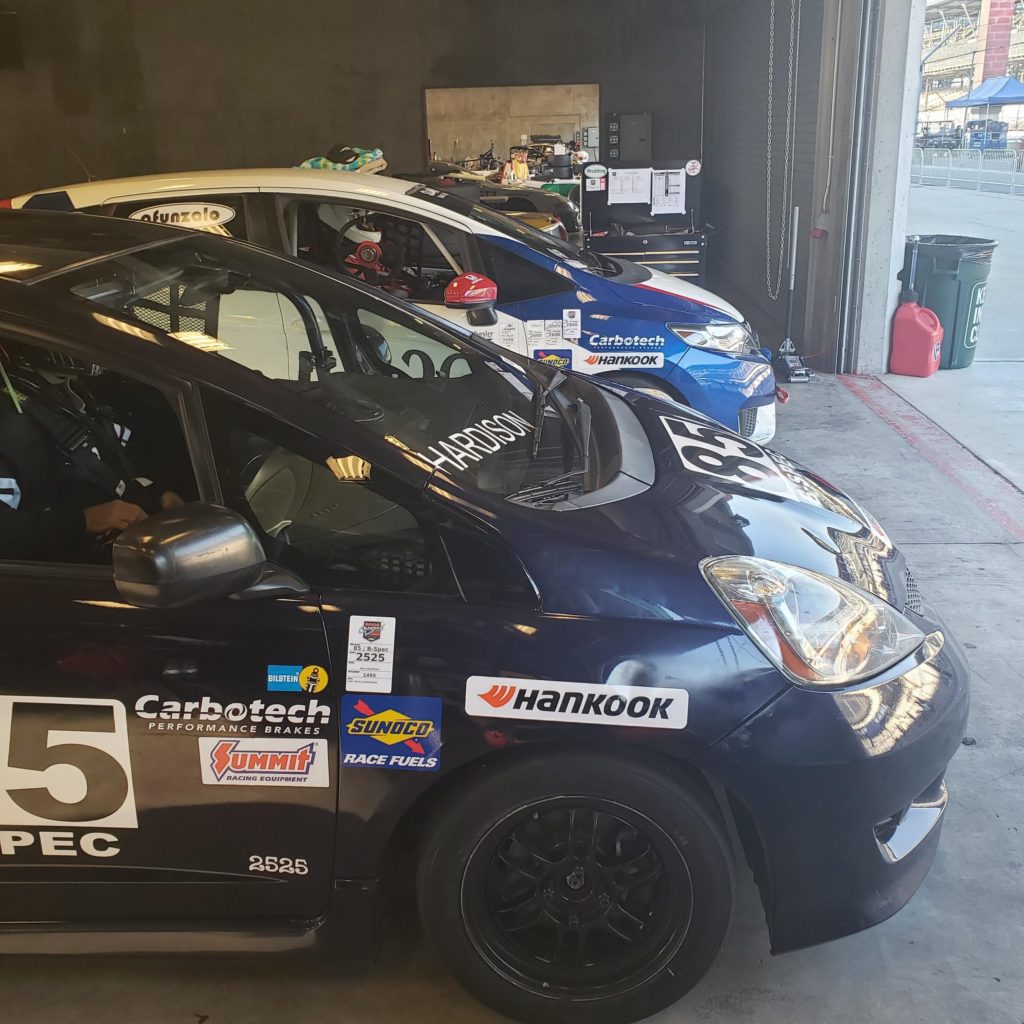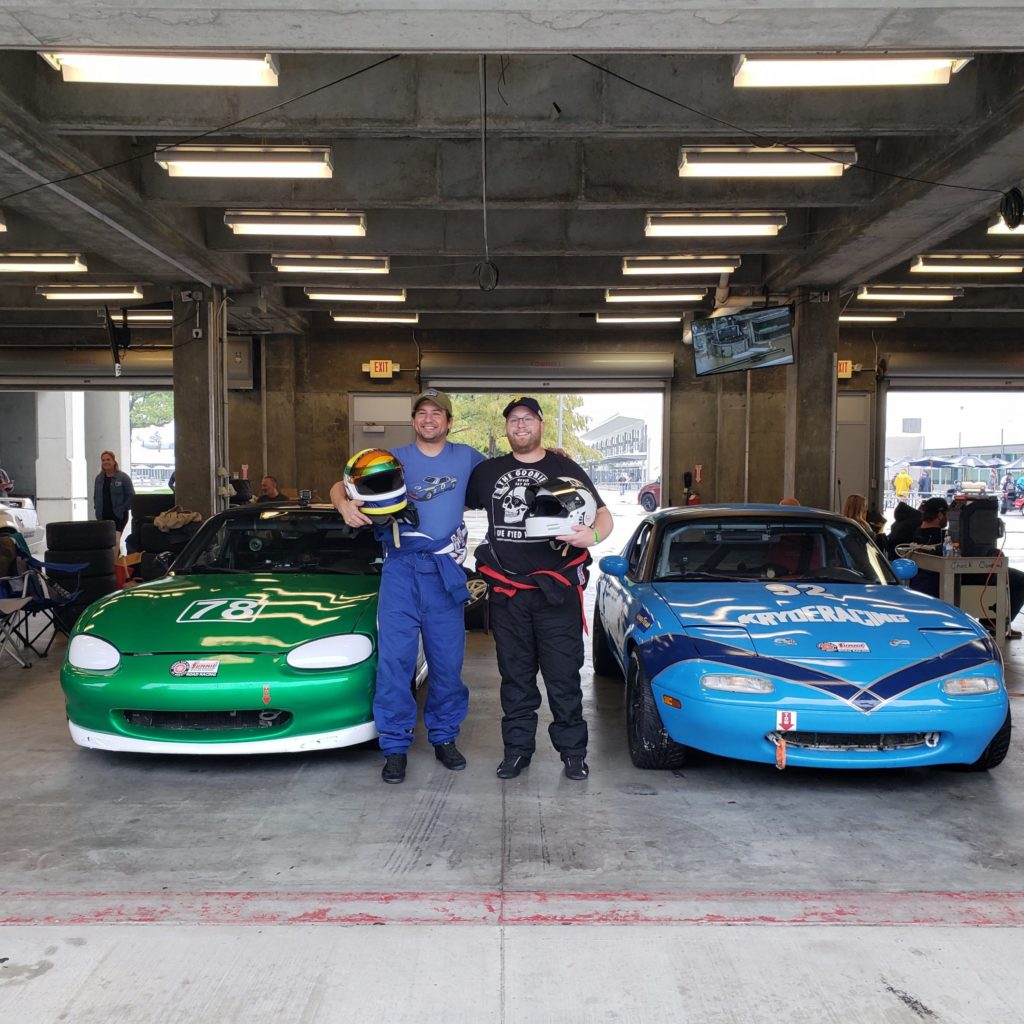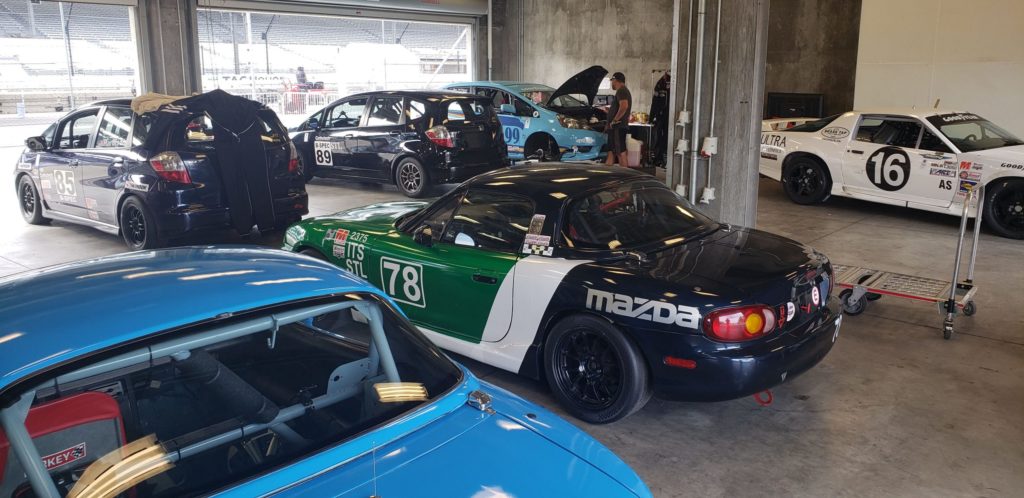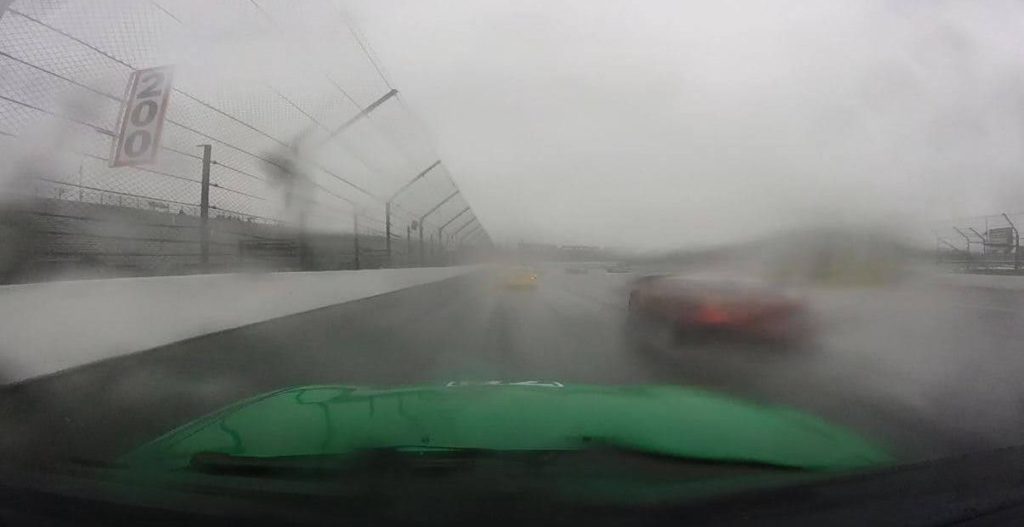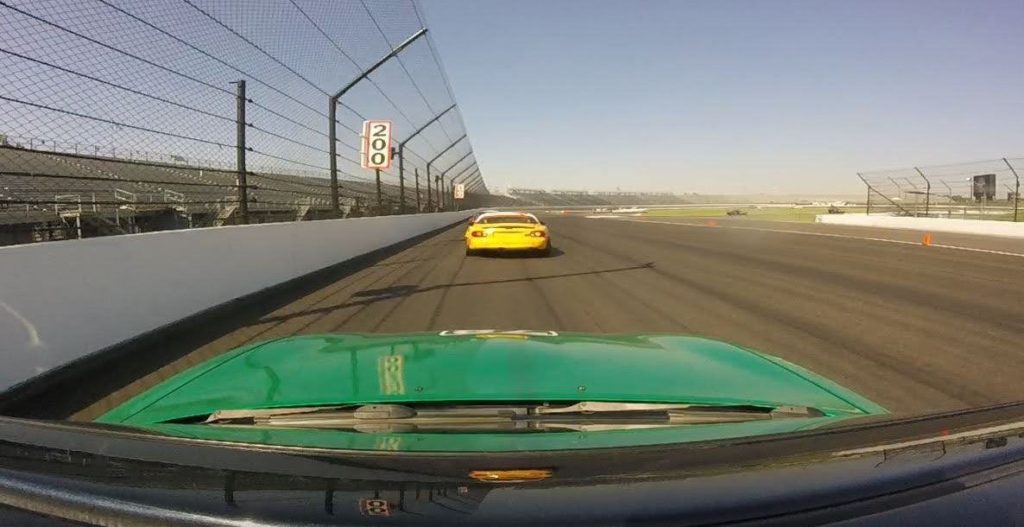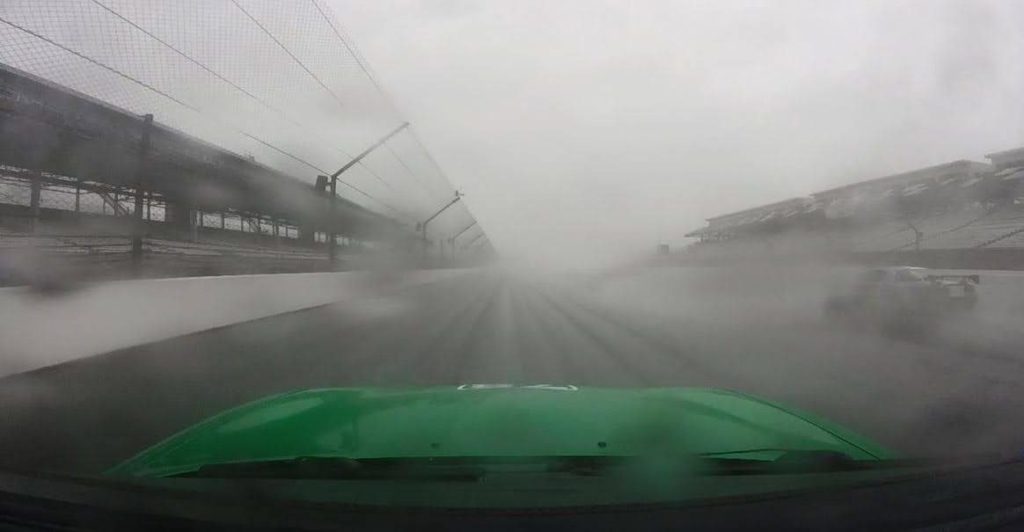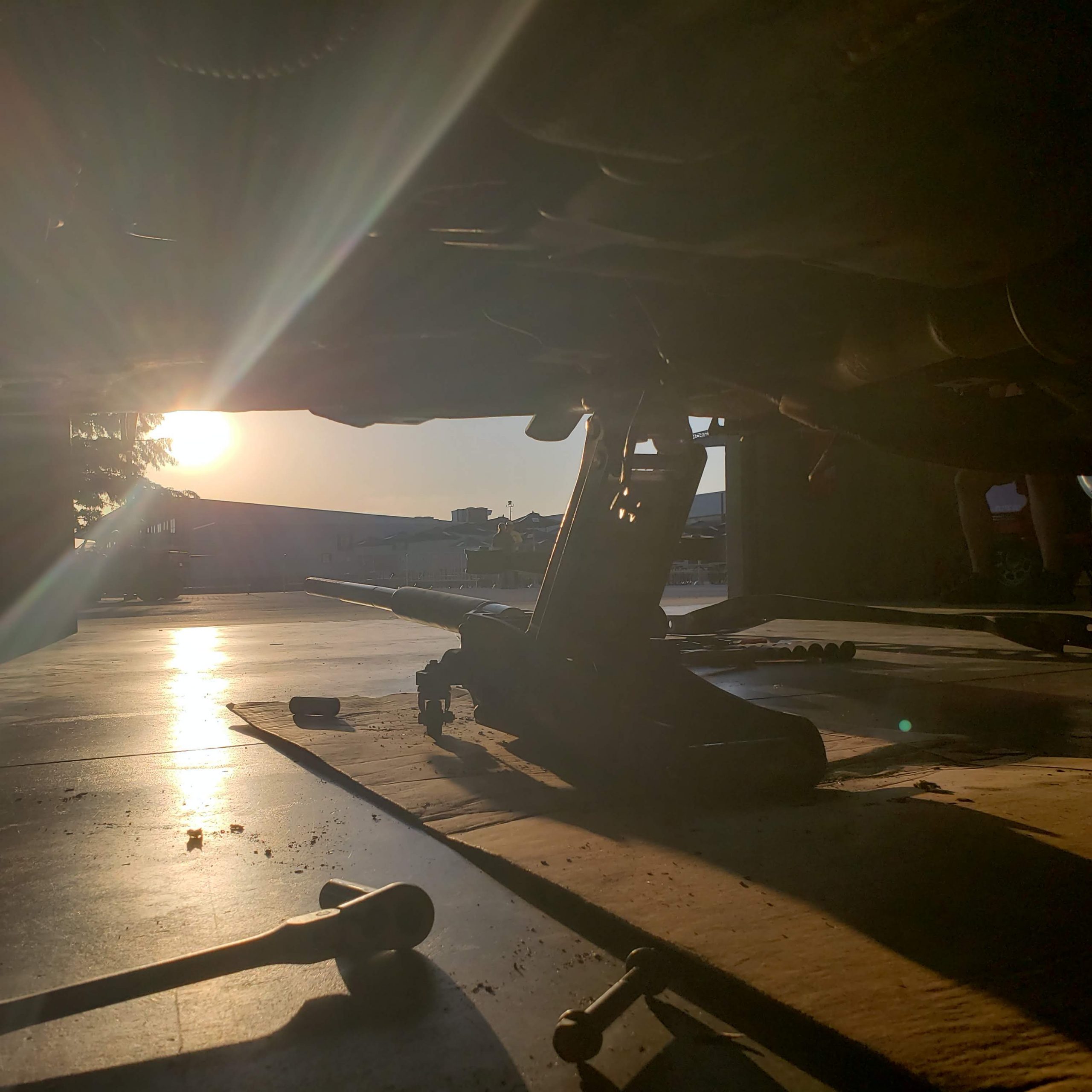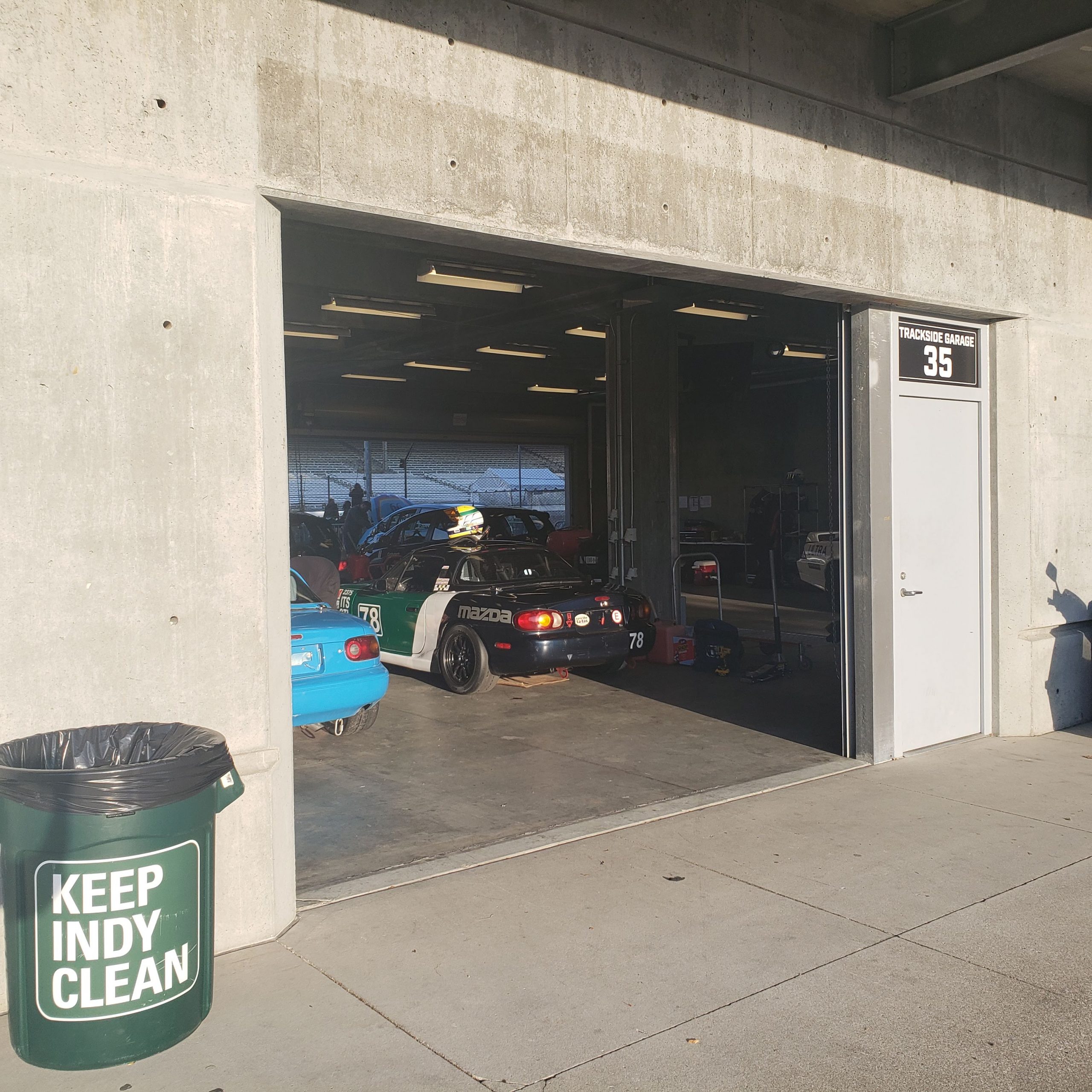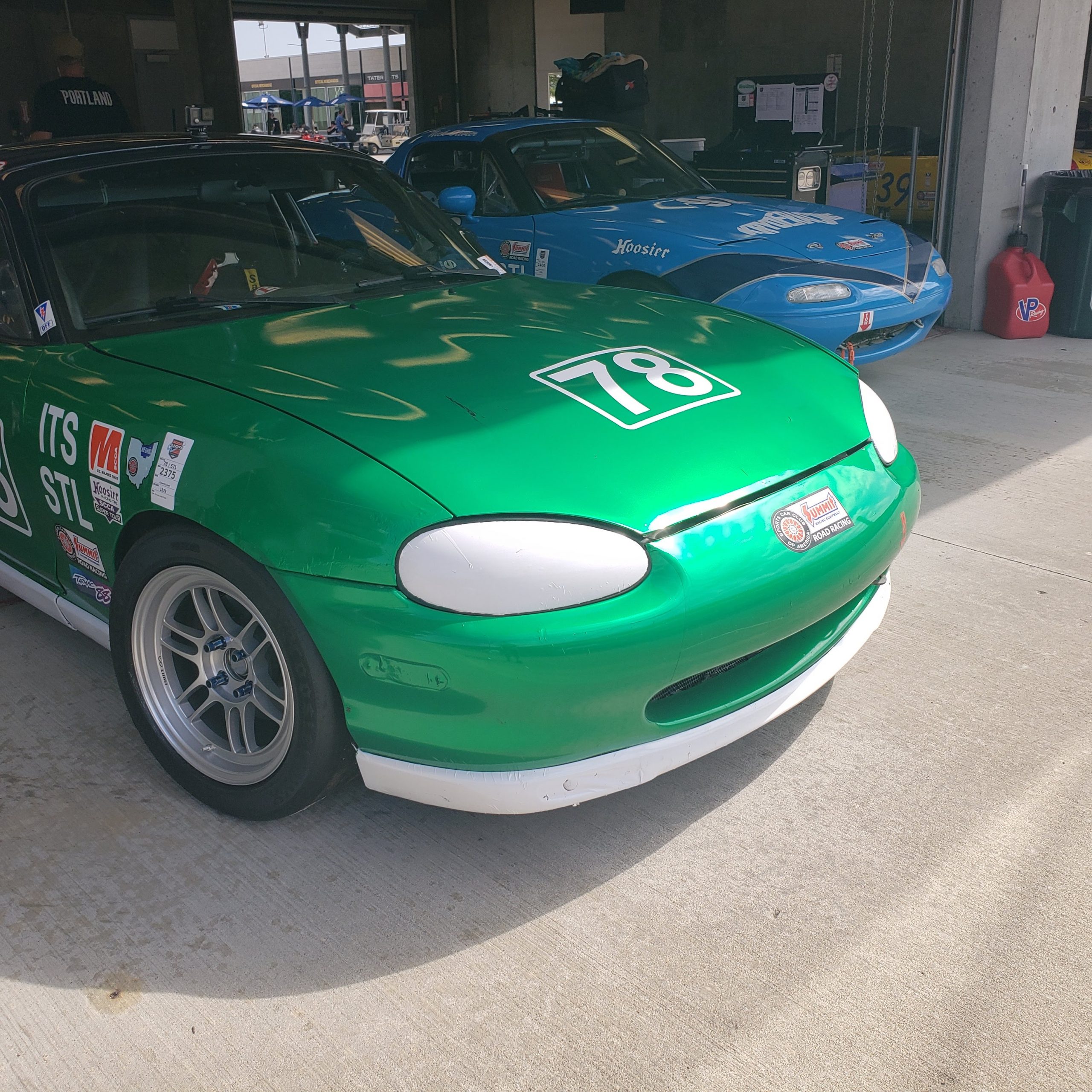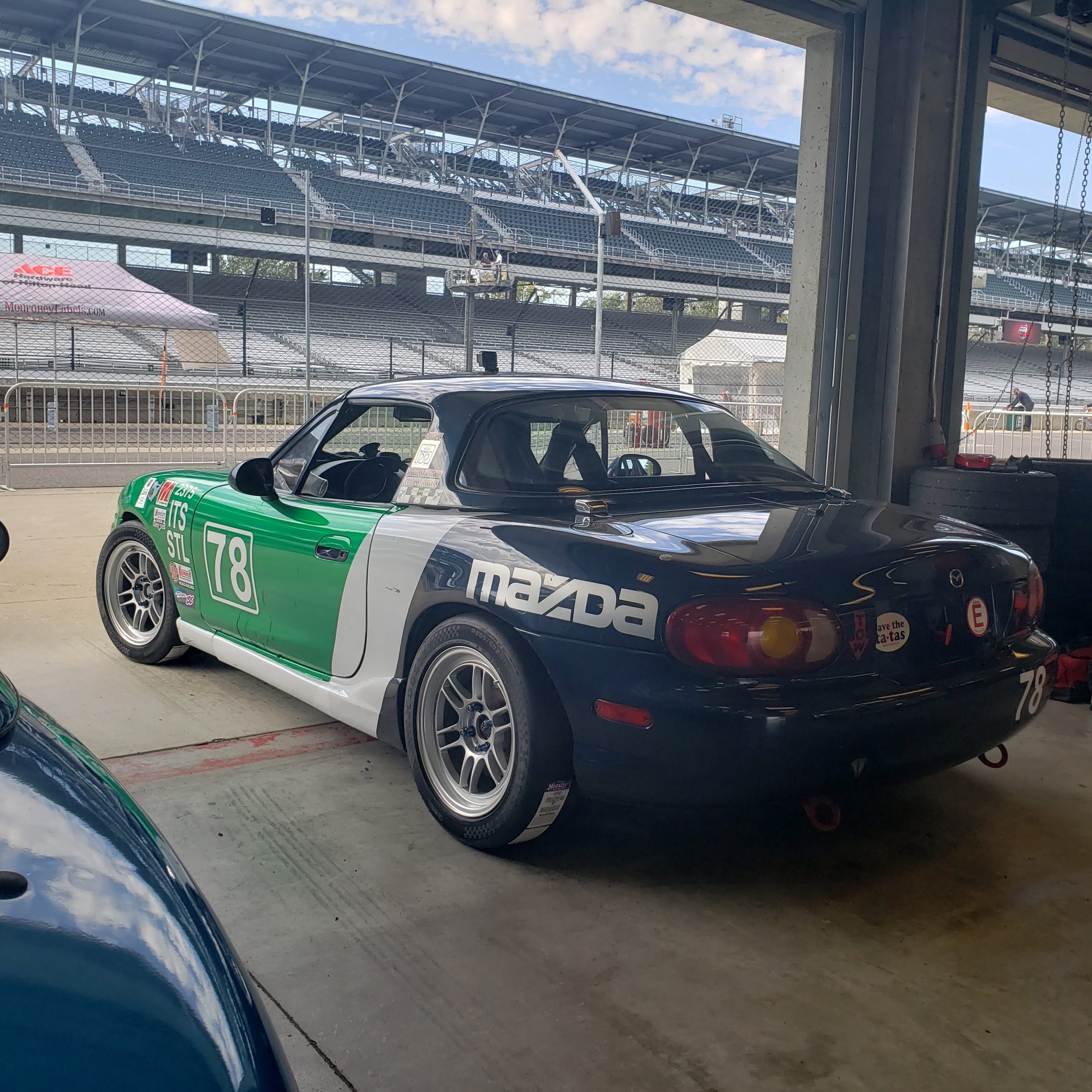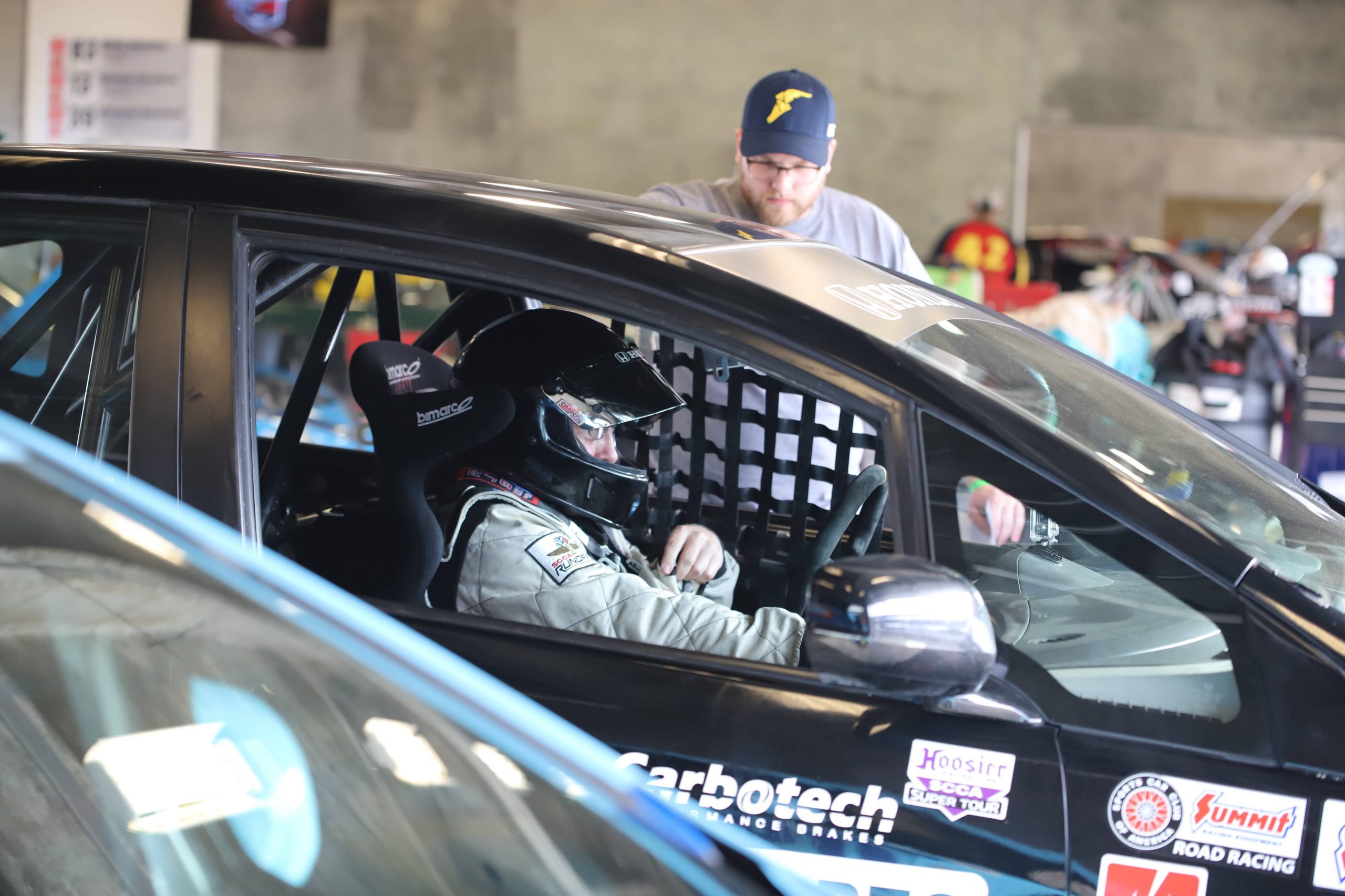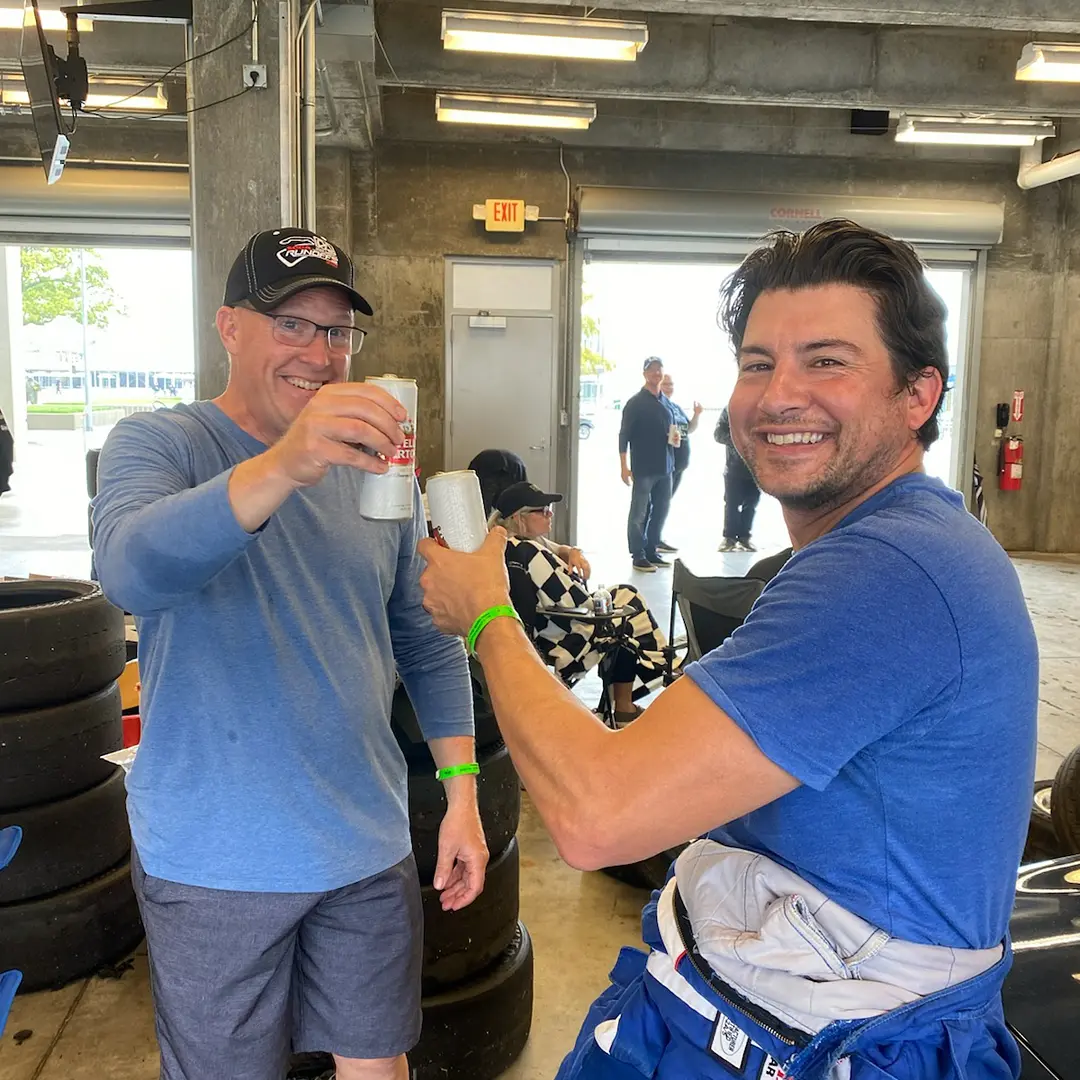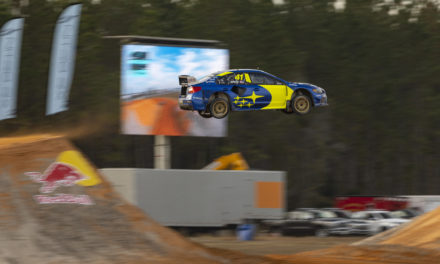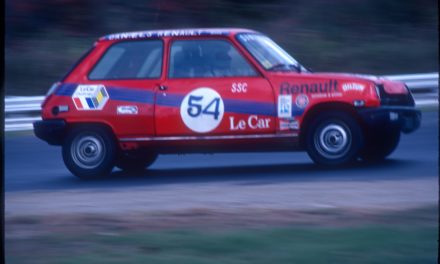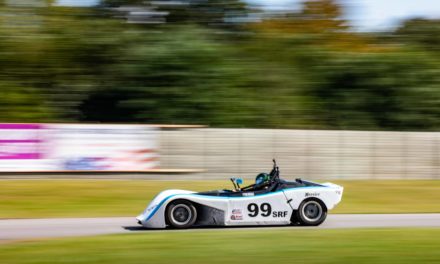I’d grown comfortable with the fact that I’d be taking a plastic knife to a bazooka fight long before I hitched up my trailer and headed to Indy for this year’s SCCA National Championship Runoffs. This statement isn’t so much about excusing the outcome (ok, maybe a little) as it is to note the obvious: most of the nearly 900 entrants, myself among them, were not going to take home a trophy from this year’s event at Indianapolis Motor Speedway. The huge entry list meant the paddock could have hosted hundreds of Hagerty “Why I Drive” vignettes, each likely offering subtle variations on similar themes. This is mine.
Mark Bennett, a close friend and someone consistently found at the pointy end of Spec Miata fields for a decade, offered some wisdom when I began considering this year’s Runoffs in late 2019. Having fought for the top spot in several SCCA and NASA Championships, he suggested I approach Indy one of two ways: do it to win it or do it to have fun — but most importantly, be clear in my objectives for the week.
I took stock: could I actually win the runoffs in Super Touring Light? Did I have what it takes as a driver? I have won an SCCA divisional title, stood on a World Karting Association podium in my first outing, and been part of some Champcar Endurance Racing overall victories… but STL is a perennial arms race with some very talented, multiple-time national champions leading the way. In a superbly prepared car, it would be a tall order to crack the top 10.

Eddy Eckart
What about with my car? My 2000 Miata is an Improved Touring S regional-classed second-generation Miata that’s merely eligible to run in STL, as opposed to being optimized for STL. As such, while excellent for its own class, at 150 horsepower to the wheels (STL Miatas of the same generation can make close to 200 wheel horsepower) and lacking aerodynamic aids, big brakes, and other attributes available to fully-prepped STL cars, it just isn’t going to run up front. After looking up the lap times from 2017’s Indy Runoffs I knew well before leaving home I’d be lapped in this race. So why, pray tell, was I even thinking about this?
The first and most obvious answer that probably applies to most of the drivers and crew at this year’s Runoffs is: it’s Indy. To spend a week at what is the closest thing to church for me, in my own car, doing the thing I love most? That’s the full-stop answer that justified all this. If I had to qualify on a pogo stick, I was still going. Even more important was a conversation I had with my friend Mike Olivier, who told me that he and his son, Nick, were planning on going to Indy—this was going to be Nick’s first, and likely Mike’s final, Runoffs appearance. Knowing that, I couldn’t not do it.

Eddy Eckart
Mike’s in California nowadays, so our reunion began when I arrived at Indianapolis Motor Speedway after a five-and-a-half-hour trek from Northeast Ohio. I located our home for the next few days: Garage 35 and 36 on Gasoline Alley, immediately adjacent to the pagoda. This was racing’s version of being seated in the front pew at St. Peter’s, and I found myself more than once during the week stopping what I was doing just to take things in.
Sharing the garage with me were four B-Spec Honda Fits, (belonging to Mike Olivier, Rob Piecarczyk, Dan Hardison, and Matt Downing) an A Sedan Camaro piloted by Michael Thompson, and Nick Olivier’s ITA/STL Miata. I unloaded and got ready for the next day’s festivities.
- Eddy Eckart
Following the second session on Monday’s test day, I noticed my car had a fine mist of oil smattered across its rear. My 4.77-geared fancy-pants OS Giken differential was leaking from the pinion seal. After consulting with my diff builder, I removed the driveshaft and looked for play in the pinion. Finding none, I topped it off and ran it in the qualifying session on Tuesday, naturally attributing any minor slip or judder to the offending part. After the session it was clear that the leak was getting more aggressive. I was going to have to change differentials to the factory 4.30 Torsen spare I brought with me (bring the kitchen sink to the Runoffs—you never know what you’ll need). I’d sacrifice some off-corner acceleration with the taller-geared Torsen, but at least it wouldn’t oil down the track or fail entirely.
The swap took a little help from Dan, Matt, a torch, and some PB Blaster. One stuck fastener can temporarily render powerless three grown humans with tools, especially when you need to reuse some of the hardware you’re trying to free. The next morning everything came apart as intended, and the replacement went in with no problems. All hail a little time and a lot of PB Blaster.

Eddy Eckart
The four B-Spec Fits in our garage fared well on the second day of qualifying, with all in the top 25, and one in the top ten of the 61-car field. Their spec tires weren’t wearing well after only a few sessions. There were also some rumblings of shenanigans at the front of the pack. Turns out the top three finishers, all Minis built by one team, were found to have an illegal part but due to a procedural issue were allowed to retain their positions. Nick and I, free from the burdens of high expectations for finishing position, joked around a little more while discussing handling attributes and what line worked best for our Miatas.
This hobby lays bare the fact that while getting old is no fun for all the reasons everyone complains about, no longer being a spring chicken can be quite rewarding. Being north of 40 and having raced on and off for about 15 years, it turns out I actually had a few things to offer Nick, who is just entering the sport. I’m always happy to help chase down mechanical issues, but for someone to seek out advice drawn from my passion and then to see them make progress based on that advice? That’s just the bee’s knees.

Eddy Eckart
Everyone hunted for extra bits of go-fast intel as qualifying drew to a close. Indy primarily hosts professional events so there are precious few opportunities for amateur drivers to get on track—there are no local ringers here in the way there are when the Runoffs visit places like Road America or Virginia International Raceway. This is another instance when being around for a while pays off—you know a few people, and hopefully you’ve become smart enough over the years to keep your ears open when someone you value offers information.
Enter Robin Bank. Robin deserves a New Yorker-length profile unto himself—gregarious, an encyclopedia of punk rock, quick with an irreverent quote, a brilliant tactician, and the most dedicated racer I know, Robin has raced karts, modifieds, sports cars, and is the leader of RBank Racing, the Champcar Endurance team with which I’ve been racing. He was at Indy to race his third Runoffs, this time in an H-Production VW Golf.
Robin and I got together with Rob Verenna, another RBank driver competing in STU, and some others over dinner to compare notes. I shared some video coaching feedback I had received and Robin offered input he’d gotten from a couple of fast drivers that had a chance to run one of the Champcar Endurance races at Indy. Together we broke down brake zones, apex points, and car positioning at various spots on the track. It helped—the following day I shaved just under 2.5 seconds off my best time. I knew there was more to be found, but I was now confident that I could make the most of my and my car’s capabilities.

Eddy Eckart
There’s some phrase about “best laid plans” that would fit here. Race day came around and planted the most giant pile of “what-ifs” in my stomach. I’d have had the usual mild jitters if it were sunny, but with the possibility of rain becoming more real by the minute I was intensely focused on wet weather variables. Precipitation in the forecast had fluctuated seemingly every half hour since the day before, but our 1pm race now seemed destined for some degree of wetness. Even though my primary objective was to enjoy the moment, I wanted to be sure I put myself in the best position possible for the circumstances. My wife Misty would tell me after the race that she’d never seen me so tense.
Around 11 am, the downpour started. I put the car up on jacks and readied my sets of intermediate and full rain tires. Nick and I discussed whether we thought it might let up as which tires to use as we applied Rain-X to our windshields.

Eddy Eckart
Just after noon I called it—the new rain tires went on and I removed one of the rear sway bar endlinks, effectively removing the bar from the suspension equation and enabling the rear of the car to better lean through the corners. I could always rotate it with the throttle if I needed to. I pulled one of Nick’s rear endlinks as well and helped with his rains.
Despite having been racing since 2006, this would be only my third rain race. (Are you serious? I get three in a single Mid-Ohio season most years — jb) I had no idea what to expect at Indy. “Nothing to it but to do it” is one of my preferred Robin Bank-isms, and I use it frequently at the track and away from it. I said it to myself as I clambered into my Miata, tightened my belts and left the dry confines of Gasoline Alley Garage 35 for the wet asphalt ahead.
I said something entirely different to myself as I realized on the way to the grid that I hadn’t softened my adjustable shocks. I loosened my belts, thinking I’d have to get out and address them without help. When I got to my 35th position on grid, there he was, Robin himself, along with Rob Verenna. I quickly waved over my saviors; they went under the hood and into the trunk to take a few turns off the shocks. More body roll and less stiffness is good in the wet, as it gives the tires a better chance at maintaining grip. My car was now as ready as it could be.
“Conservative is key at the beginning of a rain race,” Robin reminded me. “You want to make it through that first corner and live to fight on. You’ve got this.” I was grateful for the last-minute coaching. Simple as that advice may have been, Robin’s calm, clear confidence has always set me right when I am headed onto the track.
Out we went.

Eddy Eckart
Any remaining trepidation gave way to the task at hand the moment I cleared the pit lane. The rain had slowed, but the spray from the cars reached high in the air and made visibility a challenge. We gingerly tested grip limits on the out lap while trying to get some heat into the brakes and tires as we gathered into formation.
With Robin’s admonition in mind, I charged onto the front straight (as much as one can charge with a 150-hp Miata) toward the green flag, which was only barely visible through the spray kicked up by the cars in front of me. I kept an eye out for the brake markers on the catch fence to my left and picked up my friend Dan Harding’s brake lights though the mist. To my surprise there was ample straight-line grip, and I immediately knew I could go deeper into turn one the next time around. Whether everyone in the field had their own version of Robin calming them for the start, or they had watched the carnage of the T4 start the day before, or some other influence, we all managed to make it through turn one in without bending any sheet metal or leaving the asphalt.
Indy in the wet is a bit of an odd duck in that there was grip where I didn’t expect it. The brake zones offered traction aplenty, and many corners enabled a pretty-close-to-dry line. There were a few large standing puddles and a small river coming off the oval right as you entered the front straight, but overall it was a similar, if slightly slower line around the track as in the dry. The new rain tires and suspension adjustments made for a predictable car that only exhibited a hint of understeer if I was too quick with my hands.
It turns out my trap speeds at the end of the front straight were only two miles per hour slower than they’d been during dry qualifying, demonstrating the confidence I had in the brake zone grip. Harding, my friend just ahead of me at the start, was in an STL-prepped Miata that would gap me easily on corner exit, but I would manage to reel him in again under braking. This yo-yo-ing happened for several laps, and I was convinced that if I could find a spot to get by I could keep him behind me. And then I saw a corner worker waving the blue flag of doom, telling me a faster car was approaching from behind. Sure enough, the blur of an orange and blue MX-5 had appeared a ways back in my mirror. Danny Steyn had come for me.
Keen readers will remember I mentioned that my getting lapped was an inevitability. Now was my time. I had expected Joe Moser, who had qualified second in his front wheel drive Honda CRX, to take the field in the rain, but instead it was the polesitter Steyn, and in the short chute after the esses he passed me. We came up to the very next corner, the right hander before the pit entrance, and I saw them: double yellow flags. My heart sank. Any chance of passing Harding or moving further up in the field (absent someone else falling off pace) was over as I fell in line behind the leader and the pace car.
Harding, who was still about fifty yards ahead of Steyn, sped off into the distance to catch up with the field. Unlike NASCAR, there is no lucky dog wave-around in the SCCA, so I had no such joy. In the meantime, second-place Moser caught up to me and as we circled behind the pace car I repeatedly motioned for him to go inside once we got going again.
The pace car lights went out after a couple laps and I stuck on Steyn’s bumper heading into the short chute. The pace car pulled off, giving Steyn control of the field, and he got on it the moment he completed turn 12. I had no chance of keeping up and by 14, the sweeping right hander coming onto the front straight, I was getting love taps by Moser even with my foot to the floor. He passed me as we got on the front straight and we both simultaneously saw the corner stand—the double yellows were still in the air. Not wanting to throw away second place over an infraction, he gave the position back and didn’t pass me till after start-finish. I had done everything I could to not impact the race at the front, but Steyn had expertly used me as a pick. Looking back, knowing I’d made every effort, and seeing that double yellow still hanging there seemingly after the green should have been waving (and presumably Moser had a radio signal telling him to go), I felt less bad about the situation. I was pretty gutted in the moment.
I drove in my mirrors, making sure I didn’t create any issues for the front of the pack, and started picking up some speed with the drying track. It wasn’t long before I saw Nick in my mirror and the white flag waving above me. One to go.
We wound our way around Indy one last time and crossed the bricks under the checkered flag. Just like that, our historical moment at the Runoffs was complete. Back at the garage, there were hugs all around and refreshments flowed swiftly. I had moved up to 28th from 35th on the grid. Nick, a rookie less than ten races into his career, picked up nine spots to finish 29th from 38th.
Ours was not a hero’s story for the ages by any measure, and we didn’t expect it to be. I think everyone I’ve mentioned probably felt like a hero crossing those bricks in our races, though. We put in the work together—fixing our cars in Gasoline Alley, finding speed in strategy sessions, and helping each other get our heads in the game for challenging conditions. We were drawn to Indy, the center of our racing universe, determined to do our best, and we’ll be talking about the 2021 Runoffs for a long time.
- Eddy Eckart
- Eddy Eckart
- Eddy Eckart
- Eddy Eckart
- Eddy Eckart
- Eddy Eckart

